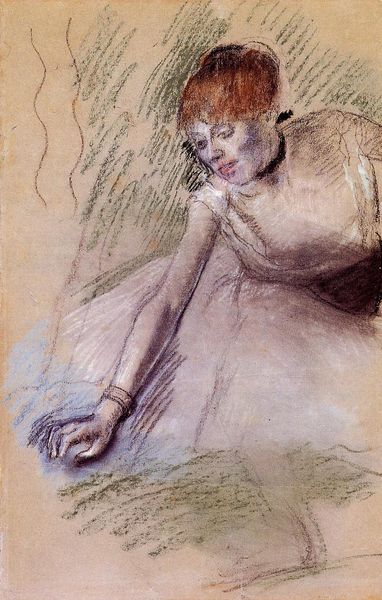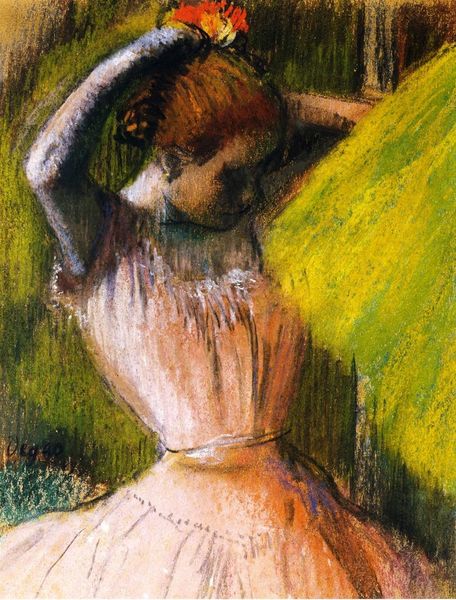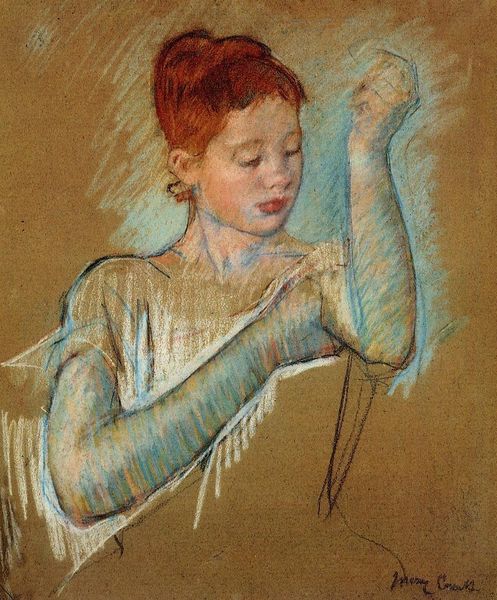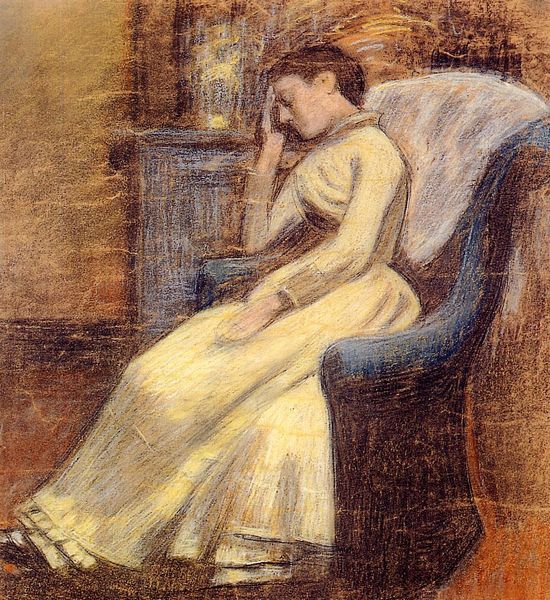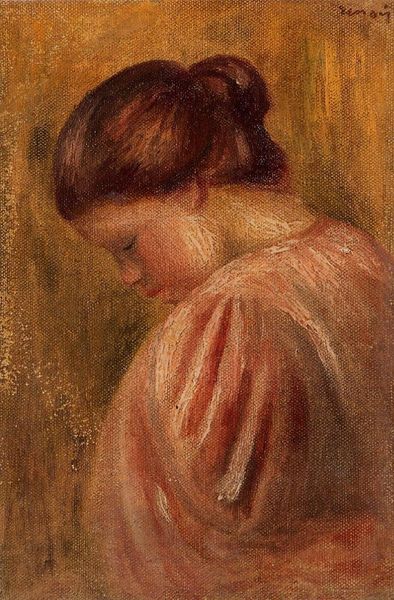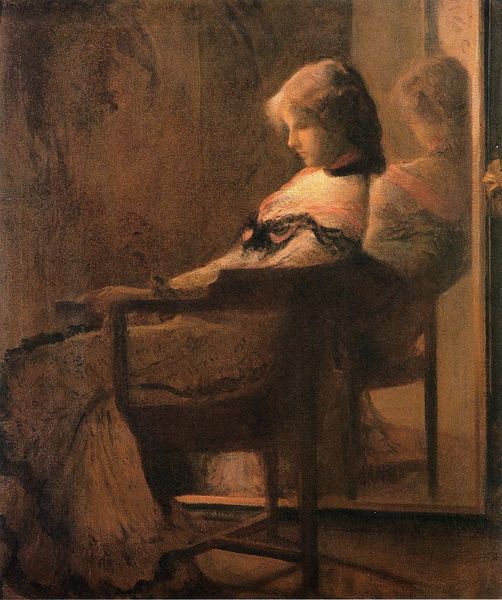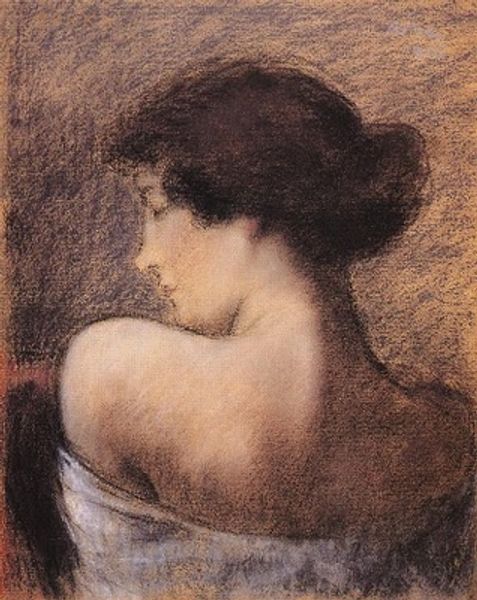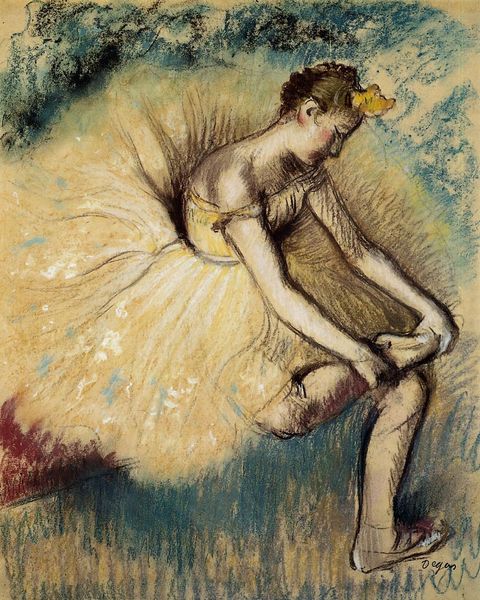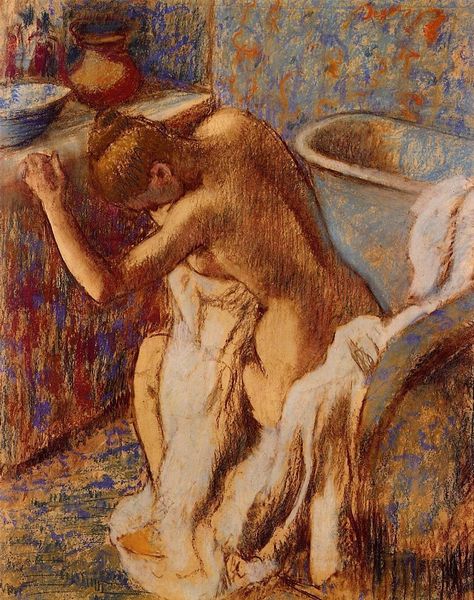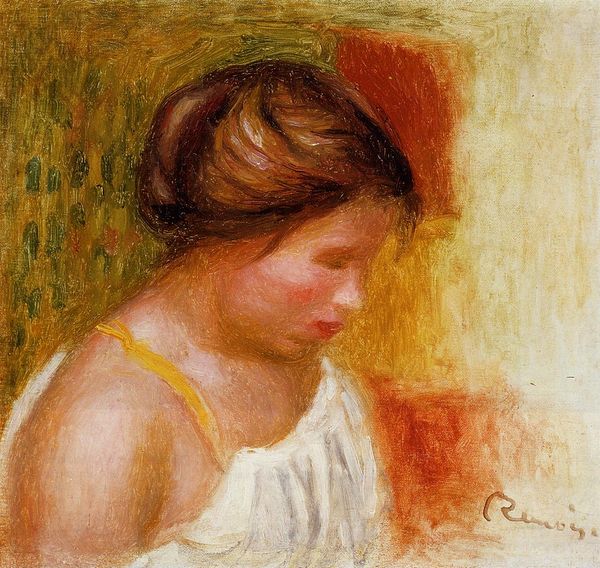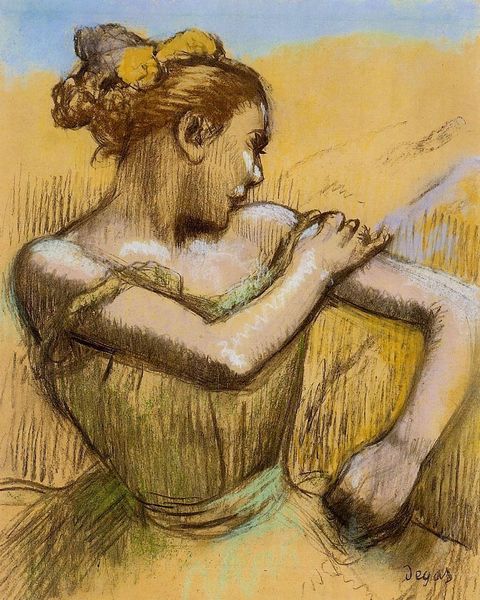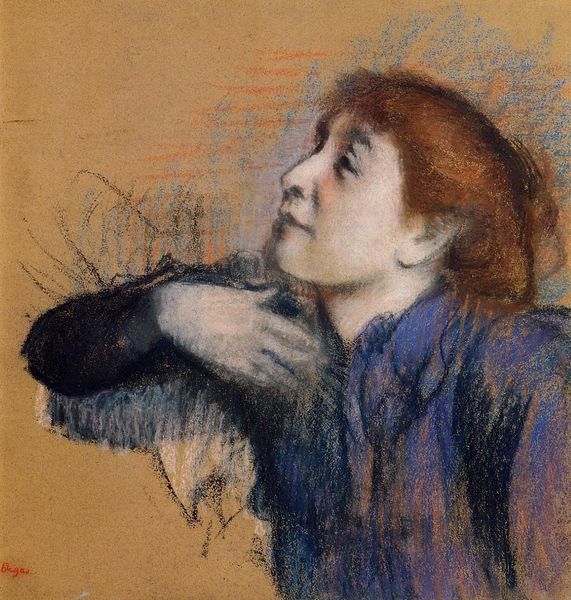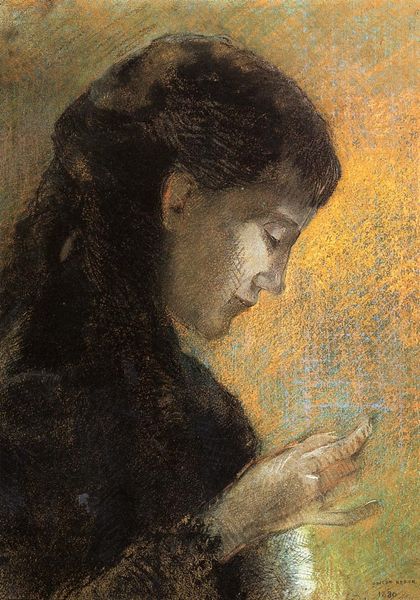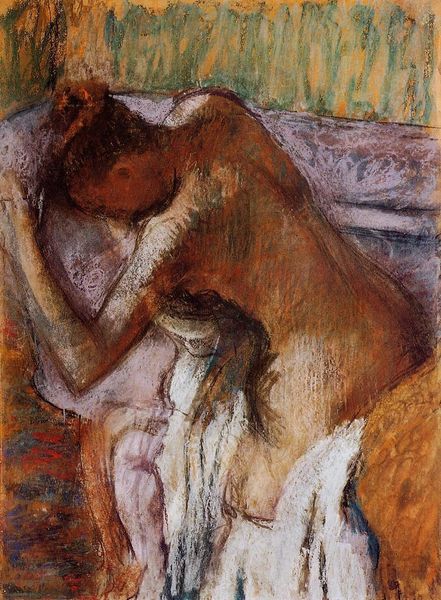
drawing, charcoal, pastel
#
portrait
#
drawing
#
impressionism
#
charcoal drawing
#
figuration
#
france
#
human
#
portrait drawing
#
charcoal
#
pastel
#
portrait art
Copyright: Public domain
Curator: We're now looking at Edgar Degas's “Woman Touching Her Arm,” a drawing from 1883. Editor: It’s instantly captivating, even melancholy. The subdued color palette and the woman’s downcast gaze really evoke a feeling of introspection. The pose itself looks so natural. Curator: Absolutely. Degas was known for his intimate, almost voyeuristic, depictions of women in private moments. It’s vital to recall the patriarchal society in which he worked. These weren't simple observations; they reflect complex power dynamics. Many historians have viewed Degas as revealing or, even reinforcing societal views on women. Editor: True, the social lens reveals volumes, but let’s focus on the formal elements for a moment. Notice how the charcoal and pastel are applied. See those broken lines, the asymmetry? He isn't interested in idealized beauty, but in capturing fleeting reality. The hatching around the face is exquisite and really models form. Curator: But can we separate those formal elements from the socio-historical context? This “fleeting reality” you mention reflects, for instance, the burgeoning of urban life and the shift toward capturing everyday life championed by the Impressionists. Degas positions his subjects in relation to specific social conditions and locations. Editor: Perhaps, but consider the pure compositional weight given to that Corset – almost obscuring, yet structuring the entire piece, no? Also, notice that her face and posture are less defined compared to her tightly rendered torso. To me that speaks to the objectification within art conventions themselves. The artist privileges one kind of beauty. Curator: Objectification and artistic ambition often coexisted, certainly. He was actively exhibiting his work in the Salons, vying for bourgeois recognition in this era. Editor: Precisely. These intimate studies contributed both to the era’s evolving art conventions and unfortunately perpetuated certain norms. Curator: It is quite the conundrum; one which benefits from both close visual readings and historical perspectives. Editor: Indeed. By engaging both approaches, we see both the artist’s intention and society's imprint on the artwork. It all coalesces into a far richer understanding of art.
Comments
No comments
Be the first to comment and join the conversation on the ultimate creative platform.
